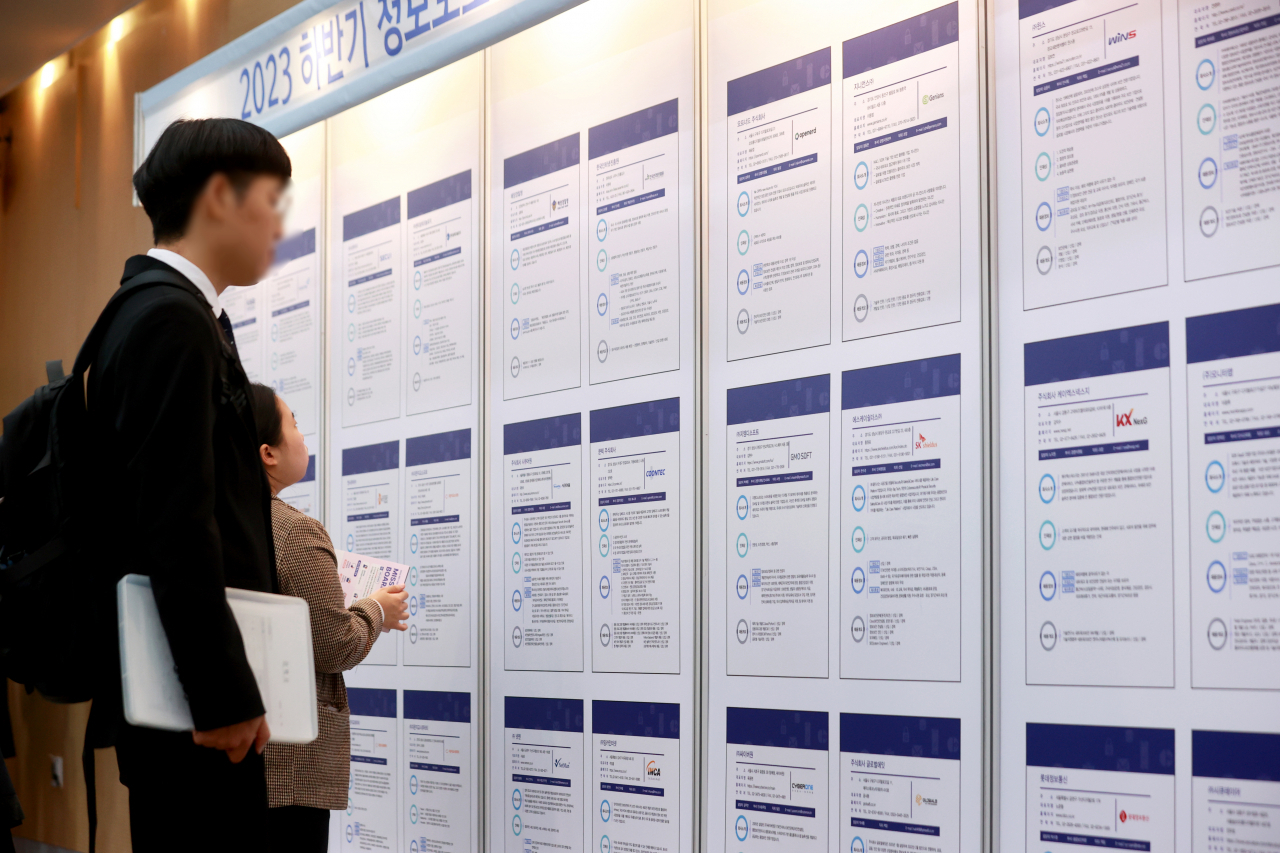Korea to inject W1tr into youth employment programs
By Im Eun-byelPublished : Nov. 15, 2023 - 15:58

The Korean government will put up nearly 1 trillion won ($769 million) in a bid to encourage young people who are not in education, employment or training, known as NEET youth, to encourage them to return to the labor market.
On the back of a strong job market, the employment rate of young Koreans aged 15 to 29 stood at 46.6 percent in October. Yet more than 414,000 people, or 4.9 percent of the age group, were found not to have actively sought jobs during the first nine months of this year, according to data from Statistics Korea released Wednesday.
The percentage of NEET individuals among the total teenage and young adult population has been on the increase since 2016, apart from when it hit a brief low in 2020 during the peak of the COVID-19 pandemic. The figure stayed in the 2-percent range in the early 2010s.
"A proactive response is needed as some young people are still having difficulties finding their desired jobs and are being excluded from the labor market,” Finance Minister Choo Kyung-ho said at a governmental meeting Wednesday.
“The government will work to help young people find their desired jobs, supporting them in all stages.”
The number of youth not searching for jobs is on the rise as there are fewer quality jobs, and some young people have chosen to remain unemployed rather than taking jobs that are perceived as unstable in terms of employment and wage, according to the government.
To bring more NEET youth back into the labor market, the government will put aside 990 billion won to launch new schemes for encouraging employment.
“If the NEET period is prolonged, there is a possibility of social isolation, leading to lower potential and quality of employment,” Heo Su-jin, an official from the Finance Ministry said. “Amid an era of depopulation, if the labor supply decreases as young people fail to provide labor, it could bring down the potential growth rate.”
Under the plan, the Korean government will expand the number of what it calls "job experience" opportunities from the current 48,000 to 74,000, encompassing both the public and private sectors. It will also launch a separate platform that provides information on internship opportunities for the following year.
Expanding an employment matching service for college students which was introduced this year on a trial basis is on the agenda as well. The service will be launched for high school students next year, too, connecting students with job opportunities.
For young people who have newly found jobs, it will funnel 4.4 billion won into an onboarding program that helps them adapt to their new workplaces. It will also give out a subsidiary up to 300,000 won per person, encouraging businesses to practice shorter working hours as more young people seek to maintain a better work-life balance.
The government will also provide 2 million won per month to individuals who have no choice but to remain unemployed because they are caring for their family members.
Meanwhile, the government has not come up with measures to address the job mismatch in the labor market, which refers to the gap between job seekers' expectations and employers' needs.
“The schemes did not include solutions to the mismatch, a crucial part of youth employment,” Heo said. “They were focused on figuring out individuals’ desired jobs and the preparations required.”
According to Statistics Korea’s monthly data released Wednesday, the number of employed people over the age of 15 stood at 28.76 million in October, up 346,000 on-year and showing the sharpest monthly increase since May. The figure has been on the rise for three consecutive months.
However, the number of youth currently employed stood at 3.86 million, down 82,000 on-year, marking 12 months of consecutive decline as the overall youth population decreased, the agency said.



















![[Today’s K-pop] Treasure to publish magazine for debut anniversary](http://res.heraldm.com/phpwas/restmb_idxmake.php?idx=642&simg=/content/image/2024/07/26/20240726050551_0.jpg&u=)